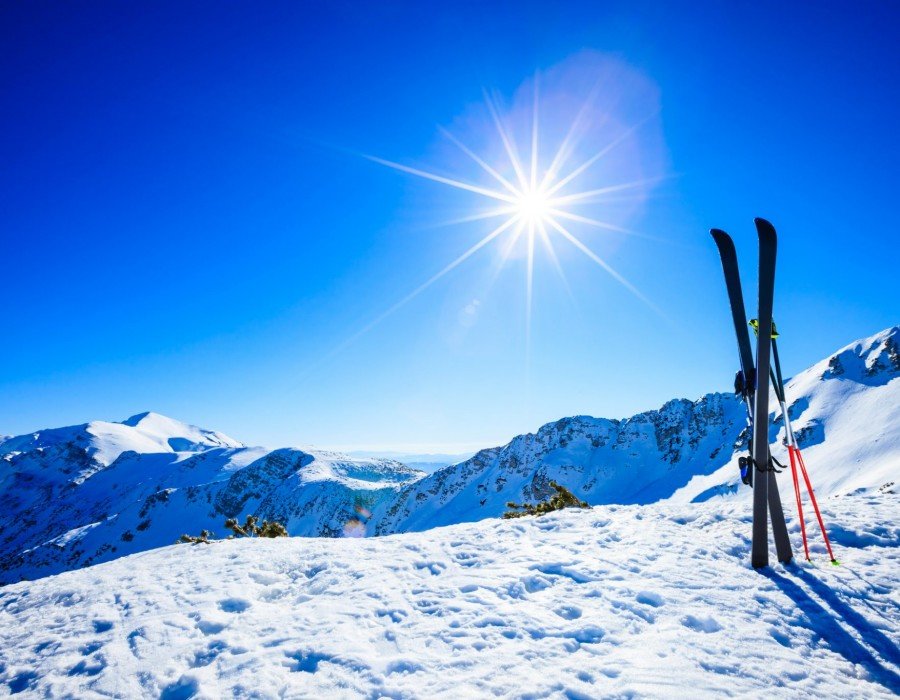Fitness and Performance
Winter Sports: Shoulder Subluxation

Ski season is about to begin and around the globe, skiers and snowboarders are getting excited to hit the slopes. However, as well as beautiful powder and stunning mountain scenery, ski season often brings a number of injuries. We spoke to Bodyset Senior Physiotherapist Giulia to find out about one of the most common injuries associated with winter sports – shoulder subluxation – and how it can be treated by physiotherapists.
What is a shoulder subluxation?
A subluxation is a temporary, incomplete dislocation of the shoulder. It happens when the head of the humerus partly comes out of (dislocates from) the glenoid socket. The shoulder joint is one of the most unstable joints in the body due to the shallowness of the socket and its great range of motion. Therefore, a subluxation can happen in every direction; forward, backwards and downwards. A result of subluxation is that the tissues which support the joint, including the ligaments and tendons, can become loose or torn.
How does a shoulder subluxation happen on the slopes?
There are two main causes of shoulder subluxation whilst skiing or snowboarding. The most common is a fall onto an outstretched arm. The shoulder can also partially dislocate when forced in to an awkward position. For example, a skier’s pole can catch in the snow and cause injury as the skier whizzes past whilst still holding on.
What are the symptoms of a shoulder Subluxation?
The most common symptoms after a shoulder subluxation are:
- Pain
- Feeling that the shoulder has just gone ‘in and out of joint’
- Swelling
- Reduced mobility
- Weakness
- Numbness down the arm
How do Physio’s treat a shoulder subluxation?
A Physiotherapist’s role is to decrease pain, restore ADL functions and improve the shoulder’s overall stability. The last point is particularly important to reduce the long-term risk of repetitive subluxations, which can lead to surgery. Your physio will ask questions about your health condition and lifestyle to build up a bespoke program of exercises. This may include:
- Strengthening and mobility exercises for the rotator cuff
- Proprioception exercises in static and dynamic situations to increase the shoulder’s stability.
- Exercises should be performed regularly, and the difficulty should be increased on a weekly basis.
- Manual therapy.
- To give immediate pain relief a course of nonsteroidal anti-inflammatory drugs (NSAID)’s may be recommended.
What if the dislocation is complete?
If your shoulder doesn’t pop back into the joint by itself and you think it might be a complete dislocation, seek medical help. Do not attempt to put it back in place yourself. Doing so might damage the ligaments, muscles, and other structures around the joint.
If you can, apply a splint or wear a sling to hold your shoulder in place until you can see your doctor or other medical professionals.
Returning to skiing
The length of recovery time depends on many factors including age, health, lifestyle and past history of shoulder injuries. If the subluxation has caused tears to the ligaments or tendons, recovery will take longer. Depending on the level of dislocation, the recovery period may take from three weeks to a few months. It’s worth talking to your physiotherapist about using a sling to protect the shoulder in more dangerous situations, such as returning to skiing. A sling should be used as part of a rehabilitation program in addition to prescribed strengthening exercises.
Here’s some top tips to help you stay safe and injury-free out on the slopes:
Advice for a safe ski season
-
Use the right equipment
– Be responsible; wearing a helmet can save your life
– Skier: Make sure that your boots fit you correctly and that your bindings are adjusted correctly. If they are too tight they may cause the injury by locking you into the ski. If possible, check that the person fitting your boots and binding is a certified technician.
– Snowboarder: It’s wise to wear pads and wrist guards, especially if you are a beginner. -
Take a lesson if you feel “rusty”
– Even if you have skied or snowboarded a lot in the past, book in for a refresher lesson if you feel you are not as fit and prepared as usual. A lesson will boost your confidence and revise techniques that may help you to deal with different snow conditions and slope gradients. Sometimes fear can be a big enough factor to increase the risk of falling and injuring.
-
Be aware of your level
Statistics show that most skiing or snowboarding injuries happen at the end of the day or early in the morning. First thing in the morning, many injuries occur due to a lack of an appropriate warm-up. After a day’s hard skiing, your body will be tired and may not be as responsive as earlier on. Take breaks every two hours to decrease end-of-day fatigue.
-
Always warm up and cool down
Remember to warm up and cool down properly when you’re out skiing.
-
Train Well
Plean at least a month of strengthening before arriving on the slopes. Exercises including double and single-leg squats, lunges, squat jumps, lateral hops and sideways squats are fantastic ways of strengthening lower limbs. Make sure you add in plenty of core stabilisation exercises too. If you’re unsure how to perform these, your Capital Physio physiotherapist will be happy to show you.